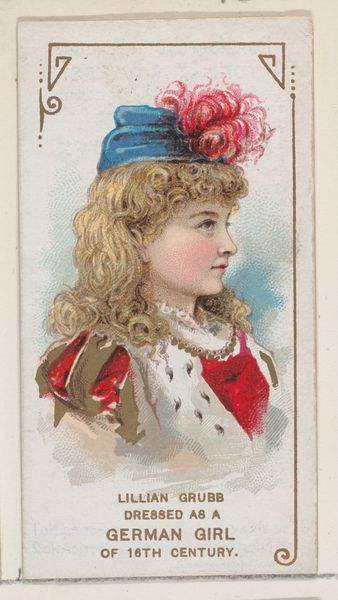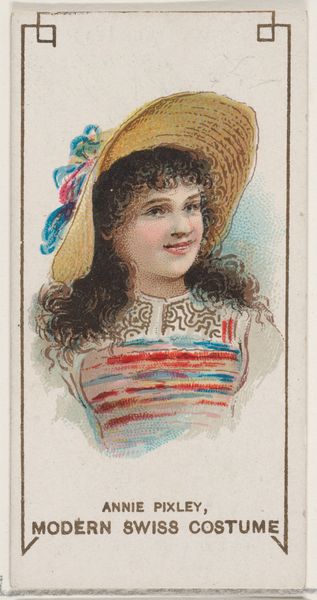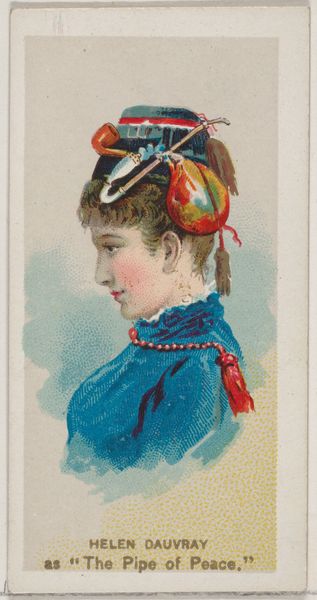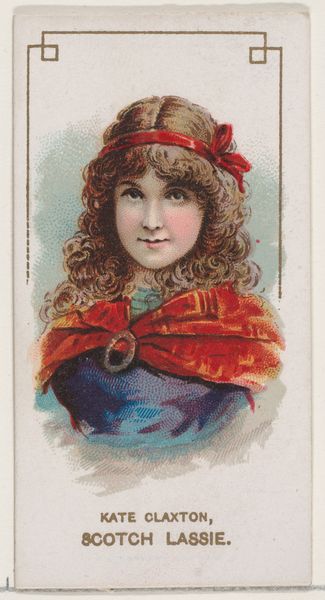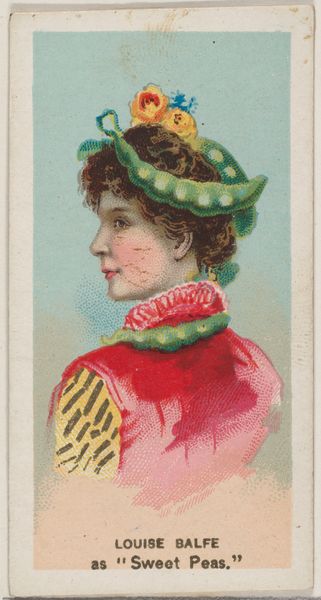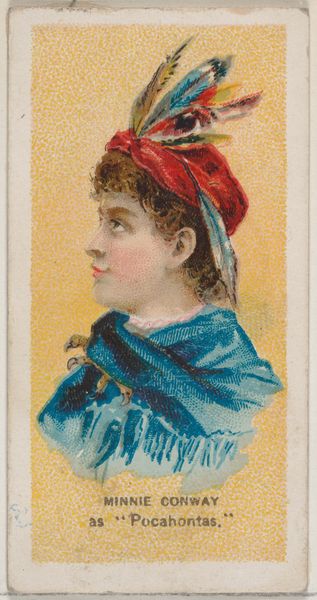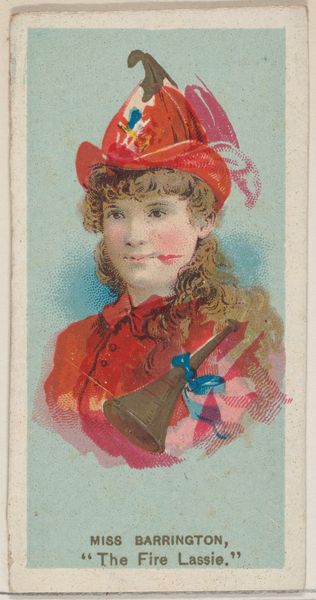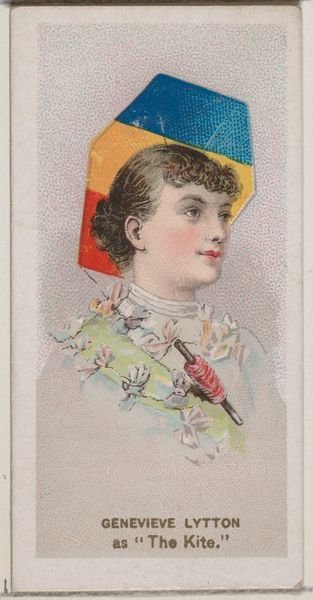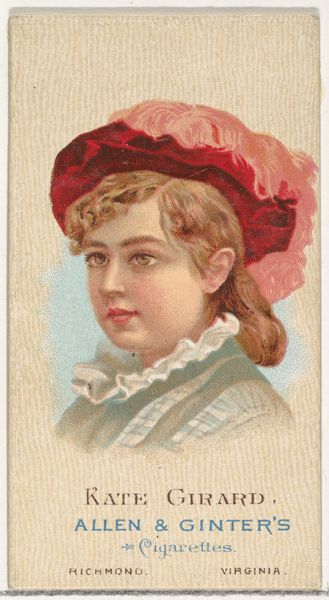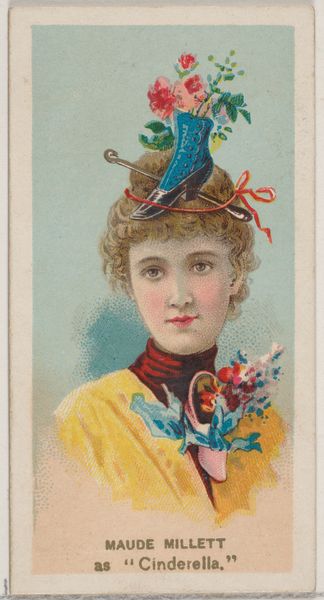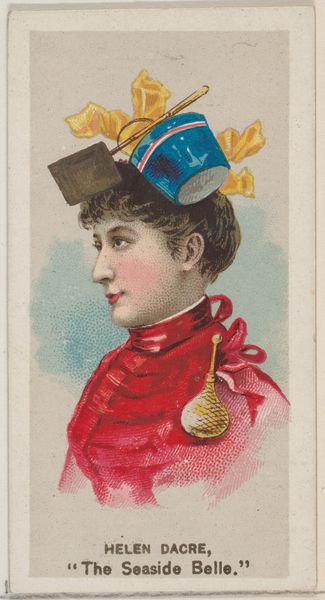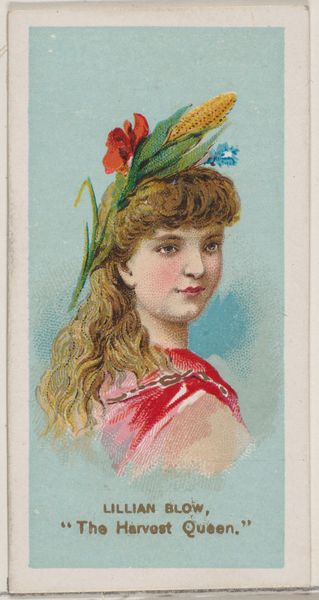
Hattie Delaro as "The Weaver," from the series Fancy Dress Ball Costumes (N73) for Duke brand cigarettes 1889
0:00
0:00
drawing, coloured-pencil, print
#
portrait
#
drawing
#
coloured-pencil
# print
#
figuration
#
coloured pencil
#
genre-painting
Dimensions: Sheet: 2 3/4 x 1 1/2 in. (7 x 3.8 cm)
Copyright: Public Domain
Curator: This is “Hattie Delaro as ‘The Weaver’,” part of the Fancy Dress Ball Costumes series issued by W. Duke, Sons & Co. around 1889. It's a chromolithograph trade card, originally produced to be included in packages of Duke brand cigarettes. Editor: My first impression is charmingly bizarre. She's so doll-like, but the oversized textile paraphernalia transforms her into this odd, almost surreal figure. Is that a pincushion on her head? Curator: Indeed! And look at how the tools of textile work become signifiers of class and leisure, abstracted as a costume rather than elements of labor. What does this "fancy dress" signify in a society built upon industrial manufacturing and gendered labor? Editor: Precisely. The cigarette card itself embodies that tension, doesn't it? The very item being consumed facilitated through labor exploitation – tobacco farming, the factory production of the cigarettes and packaging. And then to place on that very package an image divorced from that labor…it's striking. Curator: Think of the materials used—the paper stock, the ink. And the act of reproduction. What’s typically lost or emphasized as an image shifts from original drawing to printed commodity? The lines become smoother, the colors perhaps a bit more vibrant for consumer appeal… Editor: Right, the original craft gets subsumed into mass production. The performative aspect also fascinates me. Delaro is “playing” the weaver, commodifying even that image of feminine labor. Who was she playing to? Whose gaze are we fulfilling as we view this? It invites questions about the construction of identity through consumer culture. Curator: We have an actress, Hattie Delaro, essentially becoming a walking advertisement for tobacco, using textiles as a motif, not to celebrate weaving itself but to generate sales. A fascinating intersection of celebrity, commodity, and constructed identity. Editor: Absolutely. And how the image circulates—embedded in consumer habits, shaping ideas about performance and gender roles. There's so much to unravel here! Curator: Exactly. It reveals layers about labor, representation, and the marketplace. It certainly gives one much to consider, even from a simple image.
Comments
No comments
Be the first to comment and join the conversation on the ultimate creative platform.
